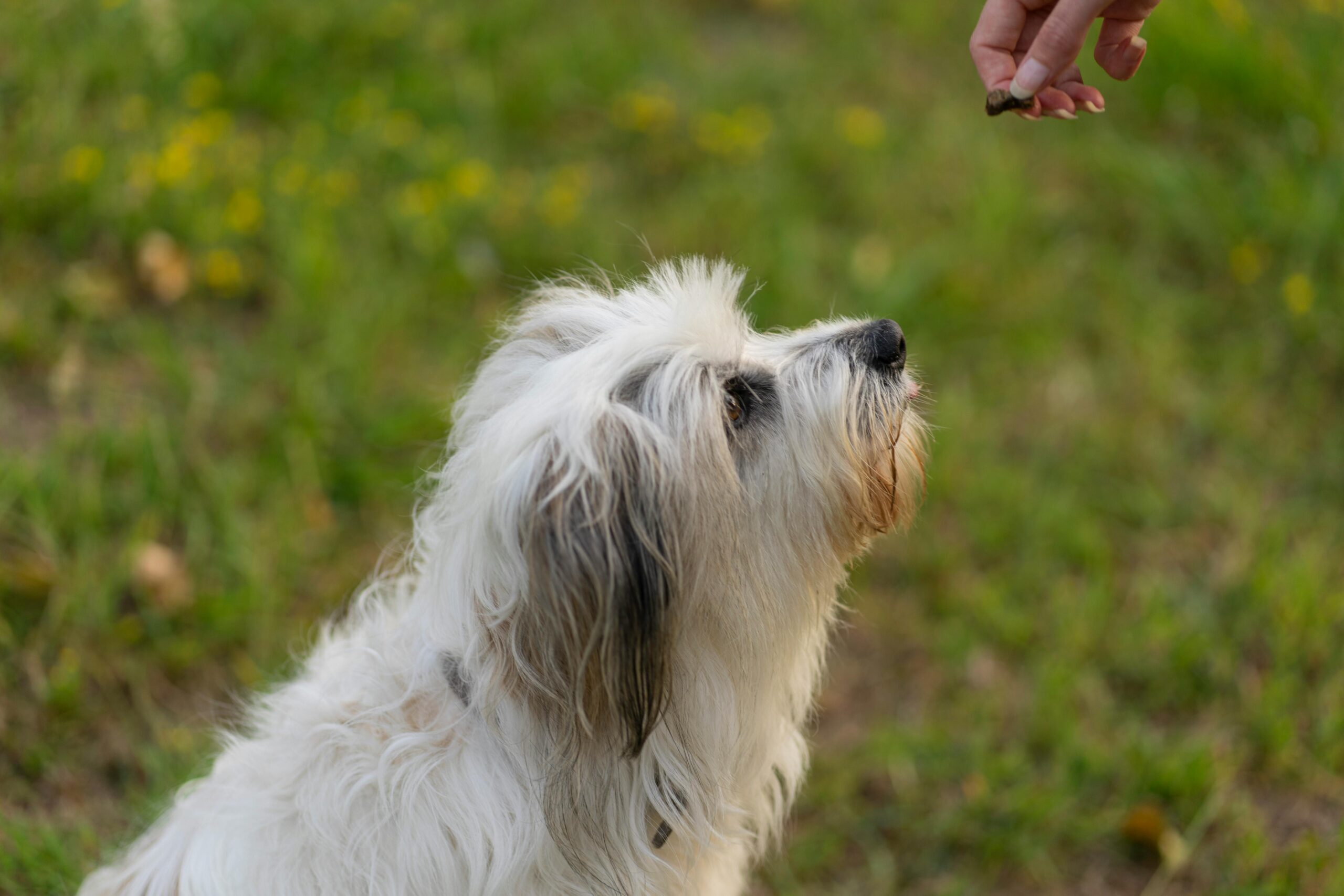Your cart is currently empty!

Best Training Treats to Motivate Your Dog
Posted by:
|
On:
|
Choosing the right training treats is one of the most important steps in teaching your dog new behaviors. The right treat can motivate your dog, help them focus, and make training sessions more effective and fun. But not all treats are created equal. In this post, we’ll go over what types of treats work best for training and why they’re so important.

Why Use Treats for Training?
Treats are a form of positive reinforcement. When your dog does something you ask, like sitting or staying, you give them a treat as a reward. This encourages them to repeat the behavior because they know they’ll get something tasty in return. Over time, this helps them learn commands and develop good habits.
Qualities of Good Training Treats
Not just any treat will do for training. Here are a few things to look for when choosing the best treats for your dog:
1. Small Size
Training treats should be small enough for your dog to eat quickly. You’ll be giving them multiple treats during a session, so you don’t want something too big. Small, bite-sized treats are perfect because your dog can quickly eat them and stay focused on the task at hand.
2. Soft and Easy to Chew
Soft treats are better for training than crunchy ones. They’re easier for your dog to chew and swallow quickly, which keeps the flow of the session smooth. You don’t want to stop training while your dog crunches away for too long.
3. High-Value
High-value treats are those that your dog really loves—something more exciting than their usual kibble. Training requires your dog’s attention, and the more they want the treat, the harder they’ll work for it. Think of it like this: Would you work harder for a piece of lettuce or a piece of chocolate cake? Your dog feels the same way about boring food versus a high-value reward.
4. Healthy Ingredients
While it’s tempting to use whatever treat your dog enjoys, it’s important to make sure the treats are healthy. Look for treats that are made with simple, natural ingredients, especially if you’ll be giving them out frequently during training sessions. Treats that are high in protein and low in artificial additives are a good choice.
Different Types of Training Treats
1. Small Meat Pieces
Dogs love meat, and small pieces of chicken, turkey, or beef are fantastic for training. They’re packed with protein, soft enough to chew, and highly motivating for most dogs. You can even cook some meat at home, chop it into tiny bits, and use it for training.
2. Cheese
Many dogs find cheese irresistible. It’s soft, easy to break into small pieces, and packed with flavor, making it a high-value treat. Just be sure to offer cheese in moderation, as it can be rich and fatty.
3. Vegetables
Some dogs enjoy vegetables like carrots, green beans, or sweet potato. These can be a healthier, low-calorie option if your dog likes them. Just make sure to cut them into small, bite-sized pieces.
4. Homemade Dog Treats
If you’re up for a little DIY, homemade dog treats are a great option. You can control the ingredients and make sure they’re healthy and safe for your dog. There are plenty of simple dog treat recipes available, many of which only require a few ingredients like flour, peanut butter, and eggs.
How to Use Treats Effectively
Timing is everything when using treats for training. As soon as your dog performs the desired behavior, give them a treat immediately. This helps them understand what they’re being rewarded for.
It’s also important to be consistent. Use the same treats for the same commands, and make sure everyone who trains your dog follows the same system.
Conclusion
Choosing the right treat is essential for successful dog training. Small, soft, and high-value treats are the best choice to keep your dog motivated and engaged. Whether you opt for meat, cheese, vegetables, or homemade snacks, make sure the treats are healthy and easy for your dog to eat quickly. With the right rewards, you’ll help your dog learn new commands faster and make training an enjoyable experience for both of you. Happy training!

